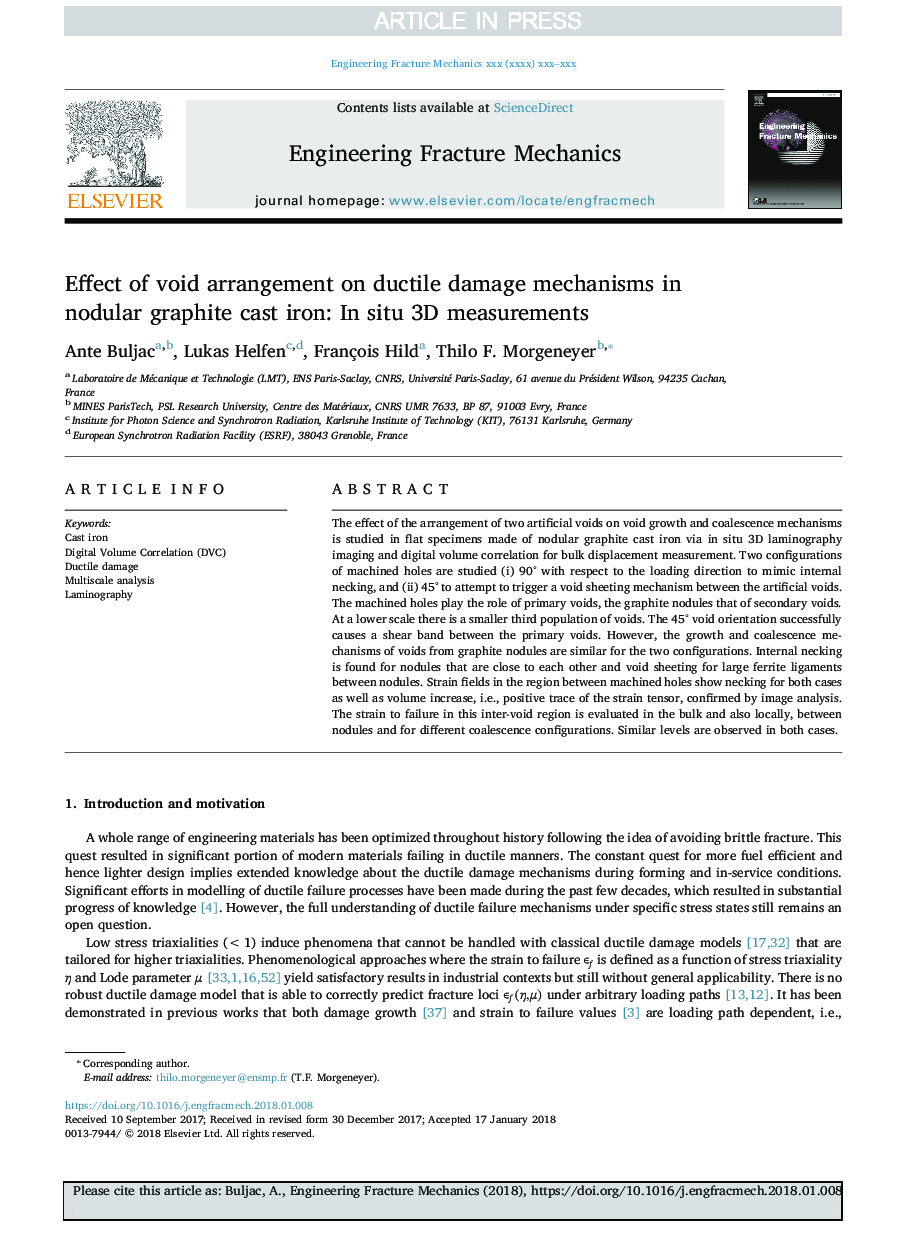| Article ID | Journal | Published Year | Pages | File Type |
|---|---|---|---|---|
| 7168969 | Engineering Fracture Mechanics | 2018 | 20 Pages |
Abstract
The effect of the arrangement of two artificial voids on void growth and coalescence mechanisms is studied in flat specimens made of nodular graphite cast iron via in situ 3D laminography imaging and digital volume correlation for bulk displacement measurement. Two configurations of machined holes are studied (i) 90° with respect to the loading direction to mimic internal necking, and (ii) 45° to attempt to trigger a void sheeting mechanism between the artificial voids. The machined holes play the role of primary voids, the graphite nodules that of secondary voids. At a lower scale there is a smaller third population of voids. The 45° void orientation successfully causes a shear band between the primary voids. However, the growth and coalescence mechanisms of voids from graphite nodules are similar for the two configurations. Internal necking is found for nodules that are close to each other and void sheeting for large ferrite ligaments between nodules. Strain fields in the region between machined holes show necking for both cases as well as volume increase, i.e., positive trace of the strain tensor, confirmed by image analysis. The strain to failure in this inter-void region is evaluated in the bulk and also locally, between nodules and for different coalescence configurations. Similar levels are observed in both cases.
Related Topics
Physical Sciences and Engineering
Engineering
Mechanical Engineering
Authors
Ante Buljac, Lukas Helfen, François Hild, Thilo F. Morgeneyer,
